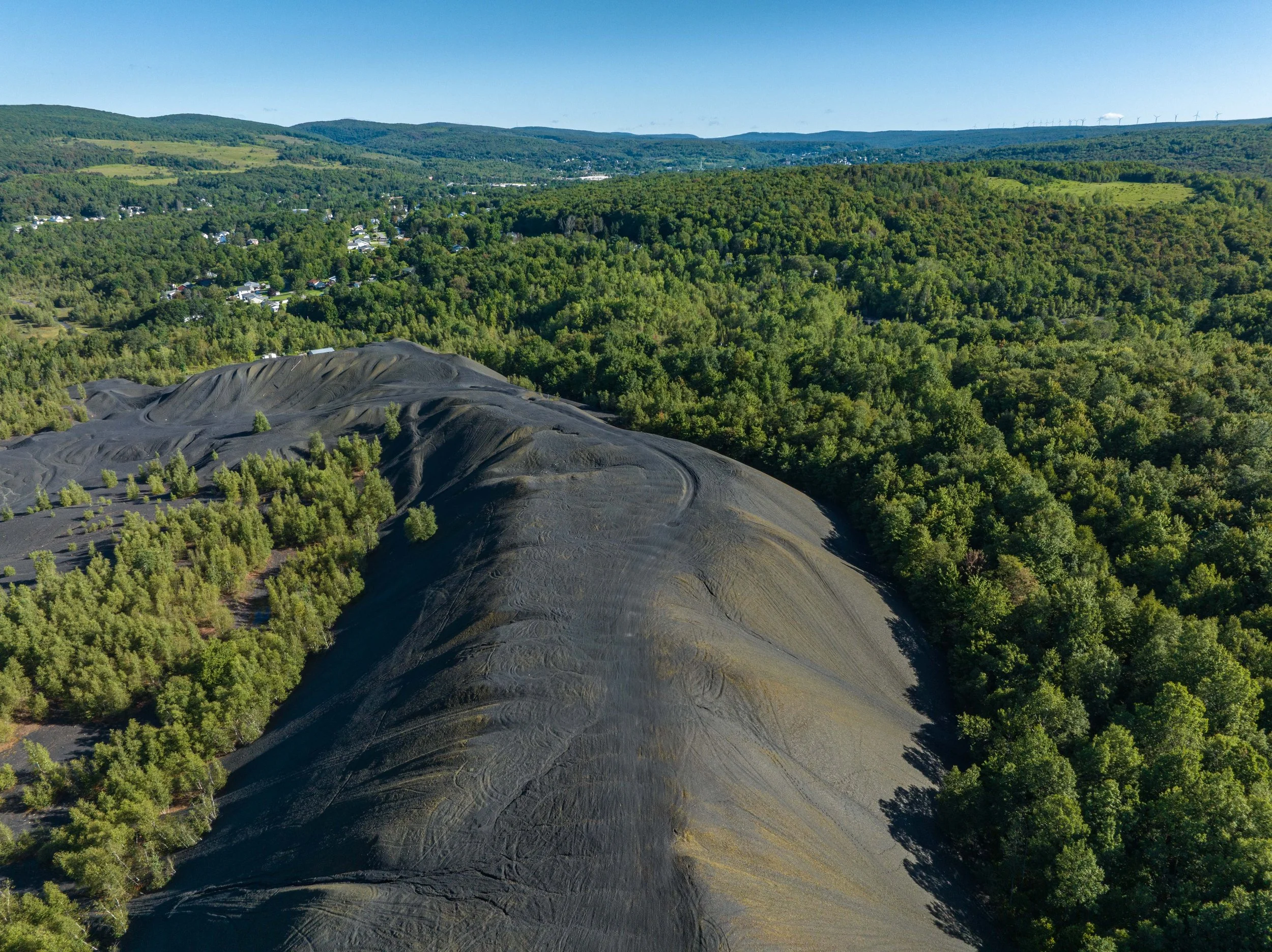Art as Resilience to Hydrocarbon Extractivism
Stephen McDonnell is an artist living much of his life in Northeastern Pennsylvania. His years there have exposed him to the destruction and waste that resulted from the extraction industry of twentieth century anthracite mining, both deep and strip mining, branding the region with disreputable legacy mining issues that severely limit its potential for new development, causes unusually poor health outcomes and has left the massive scars of mine spoils, acid mine drainage and polluted streams and rivers. He is critically aware of the hidden or disregarded dangers imposed by the extraction industry and its masterful obfuscation of those perils.
This legacy has every chance of being repeated with the massive deployment of the twenty-first century's version of extractivism: hydraulic fracturing (fracking) in the Marcellus and Utica black shale formations that underlie most of Pennsylvania, New York, Ohio and West Virginia. Fracking has unleashed heretofore inaccessible gas and oil reserves throughout the world, with major deposits in more than 30 states, and is particularly widespread in Texas, New Mexico and North Dakota, in addition to Pennsylvania.
Fracking requires millions of tons of high-quality silica sand, millions of gallons of fresh water and hundreds of chemicals, many that are forever chemicals (PFAS) for each well, of which there have been over 140,000 drilled in the United States. The fluids returned to the surface after the high-pressure injection and fracturing of the shale are radioactive and laced with benzine, ammonia, methane, naphthalene and styrene. The disposal of this toxic elixir has energy services companies desperate to find solutions, some of which are to blast it into the thousands of abandoned salt caves and wells, causing earthquakes and pollution of groundwater from leaks. In extreme cases, it is used as dust suppressant and a highway deicing agent. Such critical produced and flowback water disposal issues harken to the waste disposal challenges of nuclear energy.
Every phase of gas extraction generates its own carbon footprint, from frac sand acquisition, processing and transportation, water extraction and transportation, drilling and hydraulic fracturing, wastewater management and underground injection, gas transport and pipeline infrastructure and legacy pollution, aside from the climate-changing pollution from gas and oil combustion. The extraction industry’s calculated deception attempts to minimize these perils as it seeks to bend natural systems to its will.
In addition to the massive carbon footprint of the end-to-end fracking process, down-stream processes that shadow fracked gas production include data centers, liquified natural gas (LNG) production and transportation, and ethane crackers, contributing their own significant pollution, resource demands and socioeconomic disruptions.
McDonnell’s current artivism is in the use of natural materials that broaden the understanding of the environmental and socioeconomic consequences of resource extraction. His layered surfaces and tactile materials contrast the geological beauty of natural processes with the violent distortions imposed by human intervention. His work seeks to make visible the often-overlooked damages inflicted on landscapes, while honoring the fragile resilience embedded within natural systems. The works offer a visual critique of industrial practices and a call for greater environmental action. They also underscore the paradox of energy dominance in an era of climate crisis
